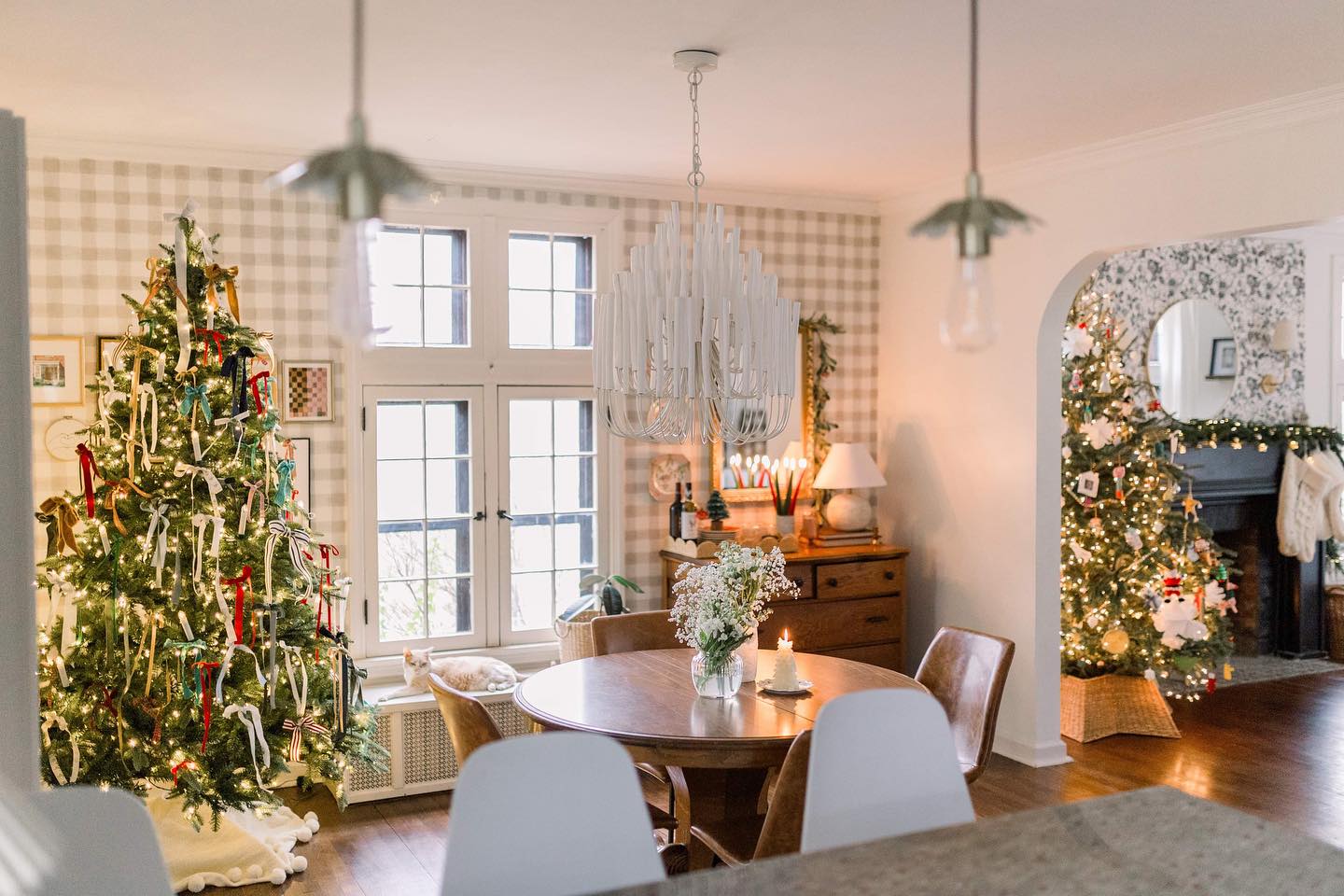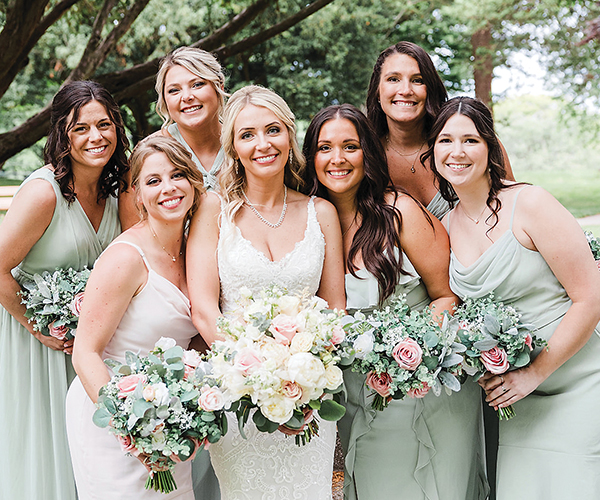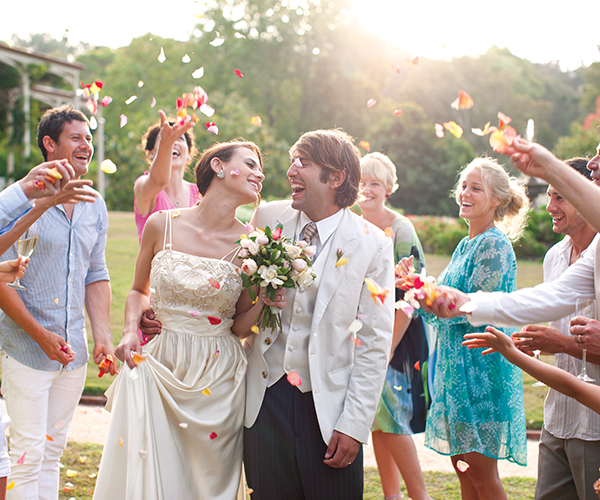Outdoor Escapes
by Kristen Hampshire | Jun. 19, 2008 | 4:00 AM
The Clapacs’ mission to preserve the natural habitat, while building creature comforts such as a well-equipped Viking outdoor kitchen, was accomplished with materials that harmonize with nature —stone, granite, brick and wood.
“We really wanted to keep that natural feel,” Clapacs says. Designated as a conservation easement, which limits the type and kind of development, their property borders the Chagrin River, making unobstructed views from the patio a priority during the design. “Anywhere you sit on the property, you can see the river, which is really beautiful.”
This outdoor oasis is a product of The Pattie Group, which was involved from the outset during home construction. The multilevel bluestone patio, swimming pool, alfresco kitchen and entertainment space illustrate the importance paid to the home’s landscape in the last five years. Pattie Group project manager Jonas Pattie says the company has completed jobs that exceeded $1.5 million.
“Those are projects where we’re getting in at the ground floor,” he explains, noting that trees can be saved, driveways routed to afford the most pleasing welcome, and homes positioned to maximize views. In the Clapacs’ case, Pattie salvaged hundreds of century-old trees that might have been cut down.
Almost anything is possible. He has installed grills that cost $10,000, poolside cabanas complete with kitchens, intimate grottoes shielded by waterfalls and negative-edge swimming pools on lakefront properties that appear to seamlessly fall into Lake Erie.
All this island-style panache reflects what clients see on vacation. They want the same special effects at home, says Mark Mazzurco, president of H&M Landscaping in Newbury.
“People want a resort in their backyards,” he says, noting how most luxury hotel landscapes include various getaway spaces where guests can enjoy privacy. “The [layout] is more intimate and secluded.” What’s inside those discreet rooms makes all the difference.
Quality materials separate a nice landscape from an indulgent escape. The idea is to merge, not fight with nature, which is why there simply is no substitute for natural stone. It can cost three times as much as stamped concrete and double the price of pavers, Pattie says, but high-end clients such as the Clapacs won’t compromise
Their bluestone patio features brick detailing that highlights architectural details in the home, and Patrice took several trips to the stone yard with her designers to find the perfect type of stone. She also found tile “bits” to adorn the pool perimeter — another must-have. The result is a patio that blends into the vast backyard and groves of trees.
Natural stone in this region typically translates to sandstone, limestone or bluestone. The permanence of natural stone adds sophistication to a landscape, whether the surface is dry-laid with seams that allow “living grout” such as lichen to fill in, or set and mortared on a thick foundation of concrete.
“We can make a stone patio look pretty contemporary,” Mazzurco says. He installed a $90,000 bluestone pool deck for one client. “That patio will be here for longer than both you and I, and you don’t get this same look with cast concrete or other spin-offs,” he says.
While concrete and plastic products that mimic natural stone have improved, they still are no replacement for natural stone, says Dan McClaren, director of design at Impullitti Landscaping in Ravenna. If price is no object, stone is in.
Still, Chas Moscarino, president of Moscarino Outdoor Creations in Strongsville, says blending natural stone with products such as Unilock, which are cast-concrete bricks or cultured products that resemble stone slabs, can add interest and lend a luxe look at a much lower cost. Stone installation takes more time and expertise, while paver installation is far more efficient since each piece is the same shape and size. “I think a balance of [pavers] and natural stone is the way to go,” he says.
Mixing and matching different types of natural stone or creating an inlay design can also enrich the look. Moscarino might create seating walls of stone in one material and unify a patio design by creating an inlay in the same type of stone. Or, he may build brick housing for a grill and lay a brick border to create an outdoor room.
Mazzurco used rounded stones on the Desich property on the Red Tail Golf Club grounds in Avon. Kristy Desich considered stamped concrete and paver alternatives, but when she met Mazzurco at the stone yard, she settled on going natural. “The stone border has an interesting shape to it,” she says. Stone encases a semisubmerged hot tub and forms seating walls to increase the patio’s capacity.
Forget “the slab.” Luxury patios involve several levels and multiple rooms — a nook for a chaise lounge duo, a space for an inground fire pit, a grand staircase with steps so wide they function as spacious landings.
“Years ago, patios were a flat slab on the ground,” Moscarino says. “Now, you see everything with elevation: seat walls, pillars, fire pits. Those elevations are what stand out and make a patio feel more like a room.”
Mazzurco says patio steps can reveal a patio’s design sophistication. “When people put in a beautiful patio with small steps, it’s not inviting,” he explains.
Always, there is a patio focal point. In the Desiches’ case, the eye-catcher is the hot tub. “There is always one element that sets the footprint for everything else,” Mazzurco says, noting that class-act landscapes always start with a detailed plan. That way, the result is a cohesive environment that accommodates a family’s lifestyle, complements the home’s architecture and carries the interior style to the outdoors.
“The landscape should look like it was always there, and not like it was added,” he says. “In a home, you could have a 52-inch plasma screen TV that is just sitting there, but if you have built-in cabinetry that surrounds it, all of a sudden it looks like that piece is a part of the house and not just in the house.”
A sophisticated home deserves a landscape with equal impact, McClaren says. “It has to be just as nice outside.”
Personalization makes a property stand out from standard-issue designs that may contain any combination of a typical patio-bed setup. Catering to a dog lover, McClaren designed a swimming pool area for four golden retrievers.
“They spend a lot of time with these dogs, and they are constantly together outside,” McClaren says. “They have a natural pond on-site, but it gets murky at times, and [the client] wanted to keep the dogs out of that and in a cleaner atmosphere.”
The doggy pool is 4 1/2 feet deep at one end and contains a recirculating waterfall and diving dock so the dogs can leap from the platform into the pool. A grass area provides a spot for furry swimmers to wipe their paws before running into the house. The space also includes a pet drinking fountain; imbedded in the walkway leading to the space is a stone medallion inscribed with the name “Golden Pond.”
As homeowners with six figures to invest in their landscapes consider how they spend their time outdoors, cabanas and grottoes enter the picture. “Some people go as far as putting pool tables and spas in their cabanas,” Pattie says, describing one design modeled after a living room, complete with a bar. The changing room — a primary purpose for a cabana — takes the back seat when such luxe accoutrements are built into the space.
From there, it’s a simple step up to the backyard spa. Pattie recalls a shot-concrete spa embellishedau naturel with boulders serving as water features.
All this detail deserves to be noticed after dark. Installed properly, landscape lighting not only extends the time spent outdoors, it also adds depth and sets the mood.
Copper tiki torches illuminate the Desich property — an idea Jeff Desich brought back from travels in Hawaii. The fire pit provides light, but torches add to the space’s ambience, Kristy Desich says. “We have friends and neighbors who come over all the time at night — we’ll cook out or have wine and cheese,” she says. “We are out there every evening.”
Light sources should never be visible. The goal is a stardust effect, not an airport runway look. “Anyone can put a light in a tree, but where you put it makes a difference in the overall effect,” says Rich Young, manager of the Cleveland location of Outdoor Lighting Perspectives. One 20,000-square-foot Mentor home has 110 lights on the property, Young says. Low-voltage 39-watt bulbs send a beam of light into trees that frame the property.
Mazzurco’s secret to sophisticated lighting is layers and low voltage: moon lights are mounted in trees and illuminate grass; uplighting defines branches and other textures; path lights offer safety and highlight beds and specific low-growing plants.
“Lighting draws a space out and makes it look larger than it is,” Mazzurco says.
Fire and water, though primitive features, are supremely responsible for setting the mood outdoors. Stirring up the world of water features are backyard bombshells such as negative-edge pools, fountains fashioned from natural stone and grottoes that allow homeowners to experience their waterfall from a man-made cavern.
Sound like a scene from the movieBlue Lagoon?
Pattie has installed negative-edge pools on lakeside properties, and the effect is breathtaking. “From the house, it looks like the pool and lake are one,” he says.
Another way to amplify a pool is to incorporate a water feature into the design. When constructed of natural stone, a swimmer can sit behind a waterfall in a private grotto area, says Pattie.
The more a pool blends in with the environment, the better. This is why the Clapacs opted for natural stone surrounding their pool.
Fire pits that are semisubmerged into a stone patio may be set off to the side and surrounded with seating walls, or placed in the center of the space as a focal point. Either way, a gas-fed pit is the best way to enjoy flames without wearing a campfire scent for the rest of the night, Mazzurco says.
The Desiches like to roast marshmallows over their fire pit, but they also flip the gas pit on while they are indoors. “Even when you are not outside, it’s beautiful to look out your window and see it,” Desich says.
Fireplaces create the ultimate living room outdoors. Mazzurco installed a fireplace with a tiered waterfall built into the back of it. Three streams of water spew in wide ribbons from the structure. “You can take a landscape as far as you can imagine,” he says.
The outdoor kitchen has topped home-owners’ landscape wish lists for several years. Outdoor appliances have been upgraded several times since then, and the equipment available for today’s backyard barbecue area is on par with the gourmet kitchen inside. Think Viking ranges, granite countertops, built-in cabinets, warming drawers, pizza ovens. And don’t forget the beer cooler.
The outdoor kitchen is a compact place, but it’s easy to drop thousands of dollars if you go luxe.
“People who really love their yard and love to be in it view it as an extension of the home, and you can sink a lot of money into a small space by making it super user-friendly,” Pattie says.
Moscarino describes a pergola-topped kitchen area with a dinette, pizza oven and fireplace. (The fireplace alone costs about $13,000.) Another project featured a completely roofed structure — a pergola hybrid — that covered a hot tub, a stone patio with various inlays, a built-in grill and a bar area with a plasma-screen television. “I’m getting more requests for completely roofed structures,” Moscarino notes, tying this demand to homeowners’ desire to create the ultimate outdoor room.
The Desiches chose a 41-inch Viking grill with side burners and undercabinet storage. A multiuse granite countertop works as a serving station. Their outdoor space functions like a well-equipped indoor kitchen. Except that with the hot tub right there, the patio is a far better place to “escape” at home.
“It’s our own little private retreat,” Desich says.
Trending
-
1
-
2
-
3
-
4
-
5










